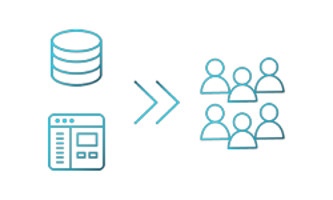
One of the key features of the Delphix Dynamic Data Platform is the ability, for the data consumer (Developer, Tester, QA’er, Data Analyst), to self serve data in an extremely functional and intuitive way. Operations like refresh, rewind, bookmark, branch and share at the touch of a button provide the end user unprecedented speed and agility while working with the data they need, and without raising tickets and bothering the DBA’s and Sys Admins in the process. Win win!
However, to take advantage of these rich features the Self-Service environment must first be configured by the Delphix Administrator and there are a some things to consider up front to ensure the Consumer get’s the data they want when they want.
Continue reading “Delphix Self-Service Configuration”
Matt is a technology consultant with over 20 years experience helping organisations around the world achieve data success using proven and emerging technologies. He is the Principal Consultant and Head Trainer at Kuzo Data.
Connect with Matt on LinkedIn.
